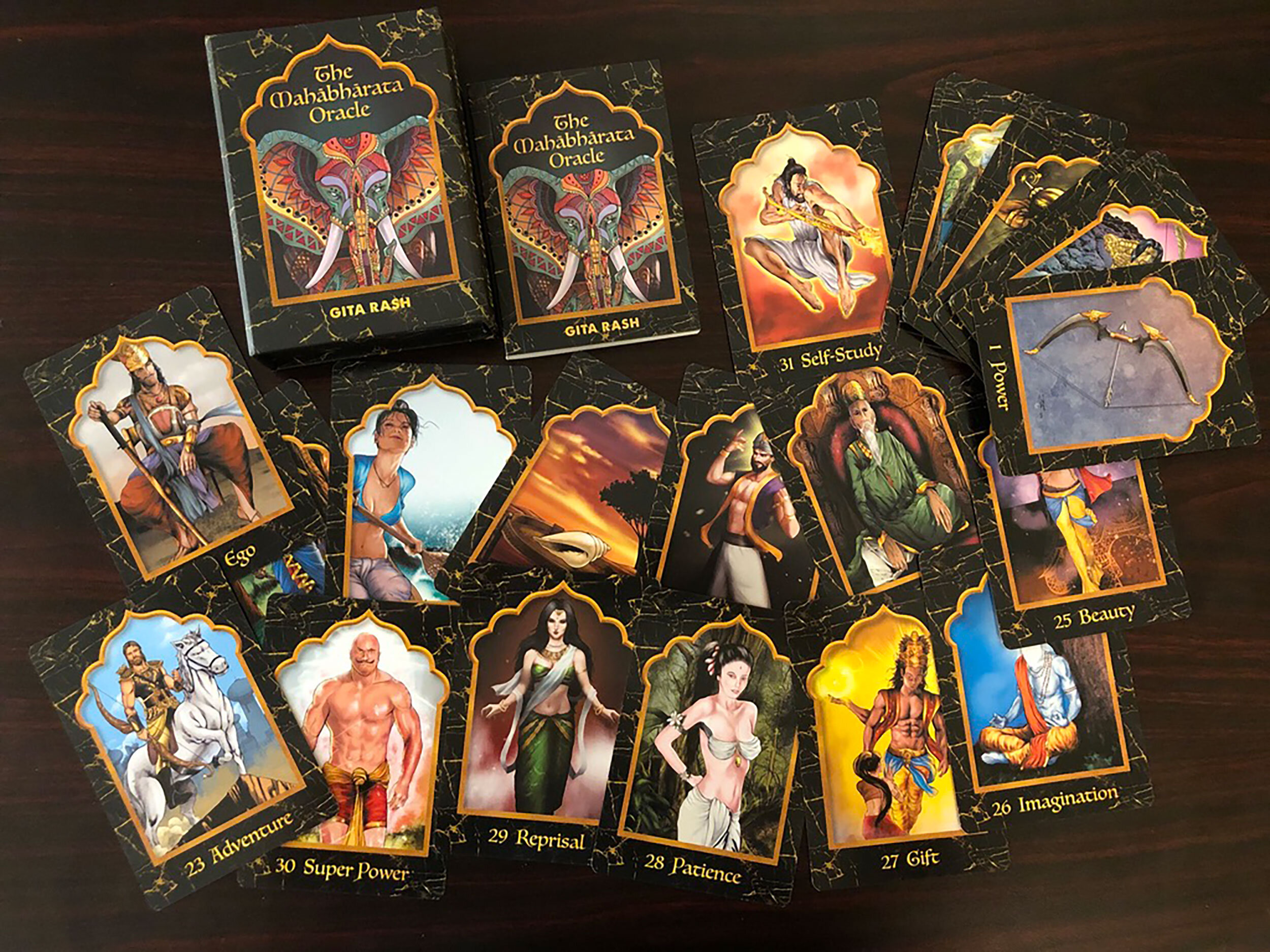Plugging in to Electric Lenormand
This psychedelic Lenormand deck brings me back to my youth! With bright colors and clever images, this deck will entertain you and inspire your Lenormand practice.
There is a new Lenormand deck in town, and it is lit (pun intended).
From Lady Lenormand comes Electric Lenormand. This is a groovy, hippie, good-vibes Lenormand deck that you can’t help but love.
Lady Lenormand is a new independent Lenormand deck publisher. Her decks come in a cute waterproof tin. At $38.00 these decks are a bit more expensive than many Lenormand decks. For the quality, and the ability to support an independent artist and publisher, the price seems more than fair.
The theme of the deck speaks to me deeply. In High School I did a paper on Tom Wolfe’s
The Electric Kool-Aid Acid Tests. Then, I did not realize that the band who provided the soundtrack for the acid tests would, in the 1980s, become my favorite band. The Grateful Dead provided me with the community and experiences that opened the door to my career as a tarot professional.
Those who have read The Doors of Perception by Aldous Huxley, from which Jim Morrison took the name of his band, know that many doors got opened back then. For me, the term ‘electric’ used in this context means only one thing.
I remember going to the refrigerator for a beverage and finding a note from my roommate on a big bottle of apple juice. The note was a warning. It read “ELECTRIC” in colorful magic marker letters. Clearly not something you would want to take a swig of before work.
Electric Lenormand is not the only modern divination tool themed around the psychedelic drug experience. There was a time when I was uncomfortable with decks like Trippin’ Waite. I would have been uncomfortable with Electric Lenormand, as well.
As much as I had nothing but uplifting experiences in my youthful exploration of psychedelia, many of my friends were not so lucky. While there is certainly opportunity for enlightenment, there is also significant danger. A part of me felt a bit of concern around the idea of promoting the positives of drug culture without also pointing out the obvious risks.
Yet, the vibe of Electric Lenormand is so happy, so friendly, and so darn cute, it is impossible for me not to embrace it with glee, just as I gleefully embraced the lifestyle from which it gets its theme.
From a divinatory standpoint, I love the bright colors in this deck. I believe that the colors will stimulate the third eye in order to easily engage the intuition.
As a tarotist, I love the simplicity of the designs. Lenormand is such a different system from tarot and uses different divinatory muscles. Complex Lenormand designs will lead me down a rabbit hole of trying to interpret symbolism. The clear, concise designs of Electric Lenormand make it easy to remember to work within the structure of the Lenormand system.
My favorite aspect of Electric Lenormand is that these cards are really cute and clever. The Rider is a VW bus and a surfboard. I actually traveled the country in a VW bus, along with thousands of other Deadheads. The House is a mushroom house, perfect for an elf. The Clover, of course, is a cannabis leaf. The Tree is perhaps my favorite card as it features the bird from the Woodstock poster on a branch.
The Man and the Lady are both hippies, and there are two of each. This allows for easier exploration of same-sex relationships, polyamory, and relationship complications.
To this day, I am not a proficient reader of Lenormand. Electric Lenormand may change that for me.
You can visit the Lady Lenormand website to get your own Electric Lenormand. Join us on YouTube for a free Intro to Lenormand class with the creator of this adorable deck.
The Mahabharata Oracle: Sacred Text, Archetypes, and Universal Truth
From Gita Rash comes a ground-breaking oracle. Here is my review.
The Mahabharata Oracle
By Gita Rash
Published by Red Feather Mind, Body, Spirit
Review by Christiana Gaudet
I have known artist and mystic Gita Rash for years. A long time ago, I told her she should design a tarot deck. She’s done something even more innovative. The Mahabharata Oracle is now available from the Red Feather imprint of Schiffer Publishing.
The Mahabharata Oracle comes in a magnet-closure box with a substantial guidebook. The deck itself is comprised of 36 named and numbered cards. The cards are printed on sturdy cardstock with lovely gilded edges.
The thing that is so unique and intriguing about this oracle is that it is based on an epic story. The Mahabharata, as Rash explains in the guidebook, is an epic of ancient India. As a tarotist I love the idea of an oracle based on an epic story, since we so often see tarot as telling an allegorical story.
For many westerners, the Mahabharata Oracle may be a first introduction into sacred Hindu scripture. Yet, the oracle and its guidebook are simple enough in design that one need not be a scholar of ancient sacred texts to understand these cards and the wisdom they hold.
In creating The Mahabharata Oracle Gita Rash has served two very important purposes. She has brought an important sacred text to the western world in an understandable form, and she has provided us with a very usable tool for psychic development and divination. As we read the guidebook to understand the thirty-six cards, we get a window into the epic tale of the Mahabharata.
The guidebook shares some clues for psychic development as well as some card spreads. This is a great oracle for beginners and advanced diviners alike. The card images and words are evocative and easy to understand. The guidebook is rich both in its storytelling and in its ability to help the reader understand the character archetype within the card.
The Mahabharata Oracle is a unique treasure. Unlike many oracle decks, this deck is worthy of deep study and contemplation, while at the same time being easy to use and understand.
See my interview with Gita Rash, and make plans to catch her at StaarCon.
The Tarot Book You Need to Read
Here is my review of Theresa Reed's new book. I love it, and so will you.
A Review of Tarot No Questions Asked
By Theresa Reed
Published by Weiser Books
Review by Christiana Gaudet
If you are going to read only one tarot book, this year (or at all) let it be the new book from Theresa Reed, Tarot No Questions Asked. Recently published by Weiser Books with a forward by Rachel Pollack, this book is a unique and valuable gem. I might go as far as to say that Reed has written the perfect book for modern tarot readers, whether beginner or adept.
The book is subtitled ‘Mastering the Art of Intuitive Reading’. Reed strikes the illusive balance between interpretive and intuitive reading styles. I’m convinced that the delicate balance that happens when we use both these tarot skills well and together creates the best readings for all of us. This book makes mastering that balance approachable and understandable.
At 283 pages, this book is an easy, comfortable read, filled with the right amount of information to be useful without being cumbersome.
Theresa Reed has a very specific communication style that uses a lot of slang and pop culture references. In Tarot No Questions Asked she shows us her natural voice in a way that doesn’t feel forced or cheesy, and that doesn’t distract from the depth of her subject matter.
The first half of the book includes a full description of each of the seventy-eight cards, making it appropriate for any tarot beginner. Each card description offers ideas for the different ways the card may speak in a reading. There is also a suggestion for a way to embody the energy of each card, as well as a ‘tarotcize’ designed to help the student find deeper understanding of the card. These extra nuggets of wise action steps will give the beginning student a fuller understanding of how to work with tarot and will make the book interesting and useful to more advanced readers.
The second half of the book focuses on intuitive reading in a way that is unusually grounded, practical and useful. Nowhere will you find the usual misleading adages suggesting that one’s intuition is always correct. Reed asks us to do the actual work it takes to discern, understand and deliver truth.
The book is peppered with short personal anecdotes from Reed’s lengthy career as a full-time tarot reader, and her lifetime as a natural intuitive. Its final chapter offers good advice for those tarotists who might consider reading professionally.
One of my concerns over time about the way we tarotists share our collective knowledge and experience is this. For the very most part, the tarot authors who tend to write the most popular books are not themselves fulltime tarot professionals. Many of the tarotists sharing wit and wisdom on YouTube don’t have a significant amount of real-world tarot reading experience.
The people who do the most tarot readings, and the people who encounter the most challenging situations in tarot reading, are those of us who are fulltime tarot readers. Sadly, a fulltime tarot reading schedule doesn’t give most of us the time required to share and document our knowledge and experience in well-written books.
Thank goodness Theresa Reed found the time and dedication to carefully craft this book which reflects the wisdom and knowledge she has acquired over her lengthy and successful fulltime career.
A Review of Tarot for Troubled Times
Tarot for healing the self and the world!
Tarot for Troubled Times
Shaheen Miro and Theresa Reed
Published by Weiser Books, 2019
Review by Christiana Gaudet
Tarot for Troubled Times is not the first book to discuss tarot as a tool of healing and magic, nor is it the first book to offer uses for tarot in a turbulent world. Yet, Tarot for Troubled Times is fresh. This book uniquely explores previously uncharted territory with an originality that in and of itself is a major accomplishment.
The book is subtitled confront your shadow, heal your self, transform the world. That is the logical order in which the three parts of this book are presented. Long before I was a professional tarotist I was a political fundraiser and community organizer. Then, we used to say that “the personal is the political”. That phrase from so long ago rang in my mind as I read this book and considered how personal healing leads us to foster social change.
I was curious to see how the authors, Shaheen Miro and Theresa Reed, would structure their co-authorship. These two luminaries make this book a seamless read, unlike many other co-authored books that feel jagged as they shift from voice to voice abruptly.
Part One of the book focuses on exercises and advice based on three Major Arcana cards, the Fool, the Tower, and Strength. I was surprised at how little discussion of tarot there is in this first section. Rather, the authors present a smorgasbord of creative and wise techniques for shadow work and self-healing, including meditation, journaling, Emotional Freedom Technique, and energy work.
Part Two of the book focuses exclusively on tarot. The Major Arcana is presented in terms of archetypes and numerology. The reader is invited to calculate their birth card as a tool of self-understanding. Each birth card offers an affirmation for personal empowerment and a directive for action. Next, there are instructions for finding one’s year card, and the Major Arcana is presented again, this time with affirmations and interpretations in that context.
After a discussion of the Four Elements, the authors provide keywords for all seventy-eight cards, and offer exercises, spreads and techniques using tarot as a tool of personal healing. Though a relatively short portion of the 270-page book, this section is jam-packed with provocative tarot wisdom, appropriate for every tarotist at any level of expertise.
Next is a chapter focused on creative, eclectic magic for self-healing, protection and positivity, including candle magic and jar magic. Oddly missing is much mention of tarot magic. I was grateful for the last paragraph of the chapter which warns against the harmful way in which our community often misinterprets the Law of Attraction.
Part Three of the book brings our attention to the world. Once again, the Major Arcana is presented, this time in reference to year cards for the planet, with appropriate affirmations and associations. The exercise is to combine your personal year card with the world year card to discover a personal way that you can take action to create change in the world. What an intriguing concept!
The rest of the book concerns itself with activism. There is a lot of well-thought-out material in this section, even for those whose views are not completely in line with the authors. This section does a better job than earlier sections of incorporating tarot wisdom with other exercises. Here there is advice on how to listen to those with whom you disagree, a discussion of what privilege is, what it means to be an ally, and tarot exercises to help you explore your allyship, and your activism. There are magical rituals for groups and individuals, and tarot magic to bring justice to the world.
There is even advice, and a tarot spread, about running for office. Back when I was a young community organizer, some of the elders approached me with the idea that I should run for a city council seat. I couldn’t imagine myself in such a role. Though flattered, I refused. Had I a time machine to go back and give my younger self this book, the outcome might have been different. I am excited for today’s young activists who will find empowerment and inspiration with this book!
In the early 1980s, in our dingy campaign offices, we often played with divination, tossing coins to read the I Ching, and working with the then-new Motherpeace Tarot. Tarot for Troubled Times honors and quantifies the ideas we had then, and brings to light a new, more sophisticated and compassionate energy for social change.
Other than my desire for a bit more tarot in a tarot book, there are only two things I didn’t love about Tarot for Troubled Times. They both have to do with my personal preferences for tone, and thus might not be at all disturbing to others.
One is the occasional use of profanity. The other, in Part One, the section on personal healing, are hyperbolic generalizations about the readers of the book. The most egregious example of this is the simple statement, “You are [expletive] brilliant!” I believe that when we use unfounded generalized superlatives, we undermine rather than empower. As my four-year-old son once pointed out after watching an episode of Barney and Friends, “If everyone is special, then no one is special at all”. The use of hyperbole and profanity felt a bit lazy and condescending, and out of step with the rest of this thoughtfully written book.
Tarot for Troubled Times gets five stars and three cheers from me, because it is a unique, well-written, powerful and beautifully formatted book. It is book that can bring activism to tarotists, tarot to activists, and a new vision of tarot and personal healing to us all.
A Review of The Moonchild Tarot
The Moonchild Tarot is exquisite. Check out my review!
Moonchild Tarot
Danielle Noel
Starseed Designs, 2018
Review by Christiana Gaudet
I received The Moonchild Tarot as a gift from my friend and fellow tarotist Serena Fox. Serena attended a tarot class I gave at True Bikram Yoga in Madison, CT, and brought her Moonchild Tarot with her. I was impressed with the unique images. When I returned to Florida, my own copy of The Moonchild Tarot was waiting there for me. There’s a reason I often say that your tarot friends are your best friends!
Danielle Noel is the designer of The Starchild Tarot as well as The Moonchild Tarot. The Starchild Tarot is dedicated to those who identify as starseed. The Moonchild Tarot is for those who honor the moon as part of their spiritual path. While both decks are exquisitely illustrated, The Moonchild Tarot is definitely the appropriate deck for me.
The Moonchild Tarot comes in a lovely, sturdy box with a lift-off lid. This is a deck that will not require a special pouch. The bottom inside of the box is graced with an illustration of the moon, within which reads “You are the dance of light and shadow”.
The cards themselves are larger than usual and printed on heavy stock. The edges are matte gold. The backs are reversable, with a lovely design embossed in gold. The card faces have an appealing matte finish and are borderless. There are many details that make this deck exceptional in its presentation and artistry and justify its $65 price tag.
The box contains not only the tarot deck, but also a hefty 279-page fully illustrated booklet. It turns out that Danielle Noel is a good writer as well as a talented artist.
The booklet contains in-depth meanings for the cards, both upright and reversed, spreads, keywords, and something that is often irritatingly missing from tarot companion books; descriptions of each piece of artwork with some explanation of what the artist was trying to convey with their depiction of each card. The guidebook also includes tips for using the cards in magick and meditation, something I fully appreciate.
I have to say Danielle Noel loses me a bit with her writing tone. She waxes poetic in a way that doesn’t appeal to me, but I think will appeal to many tarot folks. I respected the deck enough to stomach her flowery writing style, until I got to her chapter on tarot history. She makes a case to validate theories of tarot history for which she admits there is absolutely no historical evidence. She says that she judges tarotists based on their take on tarot history. I do, too. I am uncomfortable with those who propagate myth as fact. To me that this the stuff of flat-earthers, fundamentalists, snake-oil peddlers, and those who subscribe to alternative facts. I believe that the current historical understanding of tarot is meaningful enough and doesn’t need to be dressed up with illusory tales. I use tarot to tell truth. Therefore, it feels important to me to clearly distinguish the power of myth from the power of fact when we speak of tarot’s origins. Does the artist’s fanciful take on tarot history take away from my enjoyment of the deck? It might, if the deck weren’t so lovely!
The Moonchild Tarot is fairly abstract. It is is worked in pastel colors contrasted with black and white, in a collage style that includes a variety of artistic techniques, including photography. The moon figures heavily in many of the images. Many cards also include Egyptian references. One of the things I love about this deck is how evocative the images are, while still honoring tradition. This balance makes this deck perfect for readers like me who use both interpretation and intuition to create an insightful reading, and for those who are trained in the Waite tradition. Not every card pictures people, but most do. The people are diverse in race, attire, and body size. To me, this is a huge selling point for a modern tarot deck.
The Knight of Pentacles sports a manbun. The Empress is dark-skinned and dreadlocked. The High Priestess is an Asian woman depicted in a way that honors the Waite tradition magnificently.
The Wheel of Fortune tips a hat to Waite by including the wheel from that card. I particularly love Death, which shows a woman dancing amid images of creatures who transform as part of their life cycle; moths, butterflies and snakes. Major Arcana 21 is called “The Universe” and is a striking silhouette of a robed woman holding a moon against the backdrop of a pastel galaxy.
The four suits are traditionally named and numbered. Some of the images are a step away from any traditional depiction I have seen, but in each case the artist explains the image, and each makes sense to me. Stonehenge is used to depict the Ten of Pentacles; I thought that was particularly clever.
The traditionally disturbing Swords cards convey mood without showing doom-and-gloom images, so this would be a great deck for squeamish clients.
The Moonchild Tarot includes three “bonus keys”, that is, extra cards. They are Shadow Work, Divine Wisdom and Moonchild. Normally, extra cards in a deck earn my ire just by existing. Yet, Danielle Noel does a great job explaining the cards and suggesting uses for them, to the point that I surprised myself by sort of liking them!
The cards are large and hard to shuffle. I am not sure how easily I could make The Moonchild Tarot my professional workhorse deck, but I am tempted to try because the images are so lovely and evocative. I also believe that in-person clients will really be impressed by these cards.
The Moonchild Tarot would be a fine first deck for a beginner, and a wonderful addition to any collection. It’s available directly from Daniel Noel’s company, Starseed Designs.
Images of The Moonchild Tarot by Danielle Noel, used with permission.
Creative Divination: Read Tea Leaves & Develop Your Personal Code
Tabitha Dial has written a book that makes tea leaf reading accessible, fun and insightful!
A book by Tabitha Dial
Review by Christiana Gaudet
I love tea, especially loose-leaf tea. I love divination. Given these two facts it’s odd that I have never learned to read tea leaves.
Well, not that odd, because I never before had access to a clear system for learning tasseomancy. Tabitha Dial remedies that with her book, Creative Divination: Read Tea Leaves & Develop Your Personal Code.
Tabitha Dial separates herself from the emerging sea of young divining authors by being an exceptionally good writer. Her personable style is neither forced nor cheesy. While her tone is informal, she provides information that is clear, deep and actionable.
In this 223-page book, Dial shares the ancient tradition of tea-leaf reading, but with a twist. She teaches you how to find, develop and understand your own set of tea-leaf symbols.
No matter the medium, divination is hard to teach because its methods are so unique to each person. Dial has found a way to communicate this fact and has set up a series of exercises to allow all seekers to experience it first-hand.
You can perform all 79 tea leaf reading exercises in the book in order or skip around exploring the exercises that call you. However you enjoy Creative Divination, I am sure that spending time with this book and your tea cup will leave you with a new way to speak with the Universe, and a new understanding of yourself.
The Death of Mrs. Westaway, a Thriller Starring Tarot
Tarot’s on the Bestseller List in this great new mystery by Ruth Ware. But did she portray tarot readers accurately?
I don’t make much time to read fiction these days. That’s probably why I hadn’t read anything by psychological thriller author Ruth Ware until now. I happened to catch a review of her new book The Death of Mrs. Westaway on NPR during my last Northeastern Tarot Tour. My husband, John, back in Florida, heard the same review and immediately sent me the book on GooglePlay.
Why did a review of a book by an author I’ve never read cause my dear husband to send me a gift? The Death of Mrs. Westawayis about a tarot reader!
Twenty-one-year-old Harriet Westaway, known as Hal, has taken over her mother’s fortune-telling booth on the pier near their modest flat in Brighton. Hal’s mother was killed in an accident two years prior to the story’s opening.
Hal’s financial woes include trouble paying her meager rent and heating bills, and a violent loan shark whose henchman has threatened to “break her bones and teeth”.
When Hal receives a letter from an attorney requesting her presence at the reading of her grandmother’s will, her ray of hope for financial relief is clouded by the fact that she has never heard of Hester Westaway, her supposed late grandmother. It seems the attorney has found the wrong Harriet Westaway.
Though Hal is a tarot card reader, she is not a mystic. She holds her tarot clients with a sort of pitiful distain. Hal is not a scammer psychic – she doesn’t offer to lift curses, reunite lovers or appease dead relatives, but neither does she believe that a tarot reading is a mystical or psychic process.
Although Hal clearly has a conscience and compassion for her clients, she believes the work she does is fake. Her readings are a show she puts on based on the images of the cards, her observation of her clients and her assumptions about them, and sometimes, her online research of her clients’ social media accounts.
Hal’s mother had taught her not only the symbolism and meanings of the cards, she had also admonished her against superstition, and against believing her own readings. Hal’s style of tarot reading, as well as her mother’s, relies on cold reading. That is, making guesses about people based on their body language and expression.
Hal admits to having always had a knack for reading people, but ascribes this to her powers of observation, rather than anything mystical or intuitive. It is this talent for cold reading that empowers Hal to make the trip to the funeral, to stay in the old gothic mansion with the family she has never met and attempt to claim a portion of Mrs. Westaway’s estate.
What ensues from there is a wild tale of family dysfunction, loyalties and secrets, in which Hal discovers the unlikely truth of her own existence.
I love a good mystery. The Death of Mrs. Westaway is the best kind of mystery because so many details need to be uncovered; we need to guess the crimes as well as the perpetrators. I was proud that I had deduced two major plot points before they were revealed, only to be gobsmacked by the final plot twist that, psychic though I may be, I never saw coming.
We tarotists love to find books and movies that reflect our craft intelligently and accurately. Ruth Ware skillfully weaves the tarot images through the story, allowing tarot to be both a story-teller and a prominent character within the story.
So well done was the presentation of tarot that I was surprised to read that the author had no prior knowledge of tarot other than the research she did to write this book.
While Ms. Ware got the artful presentation of tarot brilliantly, I was less happy with her presentation of tarot readers. In the interview that follows the book on GooglePlay, Ms. Ware said that to prepare to write the book she read books about tarot. She had fun figuring out which cards would be featured in Hal’s readings (despite her own skepticism, Hal reads for herself throughout the story). Ware did a brilliant job of this, choosing cards very appropriate to the situations they represented, in a way that finally negates Hal’s cynicism of the cards as the story unfolds.
What Ms. Ware seems to have failed to research is tarot readers themselves. In the interview she spends some time talking about the fake psychics and mediums she researched, and the tricks they use to do “cold readings” and “hot readings”. Both techniques are employed by the main character, as taught to her by her late mother.
I wish Ruth Ware had researched a little further. Had she looked, she would have found in her own backyard the Tarot Association of the British Isles (TABI) and Tarosophy Tarot Association. Had she bothered, she would have found there professional, ethical, talented tarotists who rely on talent rather than tricks.
It’s true that Hal’s specific relationship with tarot, and with professional reading, is a perfect plot point. Ware did not need to research tarot further to create the brilliant story she did.
Only one thing nags at me.
Never in my twenty-five years of professional tarot have I met a reader like Hal. I’ve organized and run psychic fairs and tarot events. I’ve presented at international tarot conventions. I’ve mentored countless professional readers.
I am certainly aware of scammer psychics who sit in shops in the glow of their tacky neon lights, waiting to convince desperate people of their need to relieve themselves of money, jewelry and cars to avert some dark destiny. I know that the digital age has given those dishonest readers more fodder to convince their clients of their psychic ability.
The tarot readers I know, train and work with are horrified by the unscrupulous activities of those neon psychics.
When folks assume that my skills come from cold reading or internet research I laugh at them, and here’s why.
The majority of the readings I perform are on the phone, where I can’t possibly see facial expression, eye motion or body language. The accuracy and efficacy of my phone readings equal my in-person readings. Clearly, I am no cold reader. Neither is any reader I know.
The idea that I would waste precious time and risk clouding my head with internet research on a client is completely ludicrous. I know that the cards will reveal whatever I need to know to give my client the information and insight they need. I don’t need to trick my clients to impress them; I can do that with my skill.
As Ware’s novel unfolds, we discover that both Hal and her mother end up working the fortune telling booth out of necessity, rather than out of a real love of the work or a belief in tarot. And that’s where my disbelief just can’t be suspended.
Who in their right mind would choose tarot reading as a money-maker if they didn’t have a passion for it, a love for it, and a belief in it?
I am sure Hal, and her mother before her, could have made much better money waiting tables, bartending, walking dogs, or at any number of quick-cash jobs. When aspiring tarot professionals come to me looking for mentorship I make sure they understand completely that tarot reading is never a quick money-maker, and never an easy gig.
I can begrudgingly forgive Ruth Ware for portraying a less-than-honest tarot reader, although it pains me. The stereotypes that I fight against every day are the bane of my existence. That tarot seems to redeem itself in the story certainly quells some of my ire at her perpetration of those stereotypes.
What is hard for me to swallow is the idea that Hal and her mother would have ever turned to tarot reading in the first place, given their feelings about it. It does seem, though, that when the mysteries in the story are finally unraveled, the information Hal receives might give her a new perspective on tarot. I imagine she might go forward to a happier life and a more successful tarot career because of what she has learned.
Whether or not you are a tarot aficionado, you will find The Death of Mrs. Westawaya superbly written thriller. If you, like me, love tarot, you might have to bite back your anger at some of the ways pro tarot reading is portrayed. It will be worth it to enjoy this story and see the way the cards speak truth throughout it.
A Review of Joe Lee's LeGrande Circus and Sideshow Tarot
Here's a review of Joe Lee's LeGrande Circus and Sideshow Tarot.
LeGrande Circus and Sideshow Tarot, from illustrator Joe Lee, is a delightful addition to the U.S. Games family of decks. It’s not the first circus tarot in the world, but it is unique in plenty of ways, while remaining comfortably and immediately readable for tarot students at any level of experience.
In recent years, US Games has started producing some interesting boxes for some of their decks. LeGrande Circus and Sideshow Tarot comes in a colorful box with a lift-off lid. The tradition of keeping your active tarot deck in a pouch or cloth rather than the original box seems less appealing when the card boxes are nicely designed.
LeGrande Circus and Sideshow Tarot is a standard 78 card deck that honors Waite tradition. It is larger and more square than a typical deck. The card finish is matte and the card backs are reversible. The cards are numbered with Arabic numerals rather than Roman.
Joe Lee, the artist and author of this interesting deck, has a great backstory. He studied art and mediaeval history in college, and then went to Ringling Brothers, Barnum and Bailey Clown College and became a circus performer. Clearly, the tarot deck he designed and illustrated is a merging of his personal interests, knowledge and experience. For me, that kind of personal connection gives this deck a lot of depth, even if the theme or illustration style might seem frivolous.
When I was in middle school I wanted desperately to grow up and attend Clown College. Reading with this deck feels a little bit like a chance to relive that dream within my actual chosen profession of tarot.
LeGrande Circus and Sideshow Tarot is illustrated in bright primary colors in a cartoon style reminiscent of mid-century circus posters. The Major Arcana keep their traditional names. The High Priestess is called the Popess, and is a sideshow fortune teller. The Hierophant is the Pope, and is the circus owner.
The Minor Arcana suits are Wands, Coins, Swords and Cups. I appreciate that Joe Lee resisted the trend to rename the Majors and the suits to fit more closely with his theme.
Each suit, however, does correspond with an aspect of the circus. The Wands are the tent poles, and the people who do physical work to make the circus happen. The Coins are the vendors and salespeople. The Cups are the circus performers, and the Swords represent the darkly bizarre sideshow.
Although the artwork is a cartoon style, the images are far from primitive. Many of the images honor Waite-Smith, but none seem like a cheap clone. I have to admit that I find this deck a lot more appealing, and more readable, than I might have thought, considering the theme
The enclosed little white book, written by Joe Lee, is informative and comprehensive. Lee includes revered interpretations. The card backs are revisable, and are probably my least favorite part of the deck. The smiling clown heads seem downright creepy.
Joe Lee’s LeGrande Circus and Sideshow Tarot is a fun theme deck that is smart enough to be a working tarot deck. The colorful images will delight even the most squeamish clients. I think many working readers will enjoy working with this deck at carnival gigs. This deck will also make a thoughtful gift for any of your friends who collect clowns, or circus memorabilia.
I like the circus theme for tarot. It reminds me of the Fool, and reminds me that even the worst circumstances look better behind some glitter and glamour.
Holiday Open House 2010 Recap
A review of the Holiday Open House fundraiser held in 2010 in downtown West Palm Beach at the Harvey Building.
That it rained for most of December 18, the day of Christiana’s Annual Holiday Open House 2010, shouldn't surprise anyone. When I was commuting from the Poconos to Connecticut, folks in Connecticut would know I was coming because along with me would come the snow, hail, sleet and rain. Special events in the Poconos, like our fabulous Tarot Picnic and our Soup and Psychics fundraiser, were also often held in challenging weather. Nonetheless, our events were always successful.
It should therefore also surprise no one that Holiday Open House 2010 was an amazing success. No rain could dampen our spirits; no wind could extinguish our flame. What began more than a decade ago in Putnam, Connecticut with me giving free readings in celebration of the holidays has this year evolved into a 200+-person event.
We had no fewer than twenty-two volunteers posted on five floors of the Harvey Building in downtown West Palm Beach. Our attendees were just as generous, compassionate and spirited as were our volunteers.
Managing the lobby were our hosts, Galen, Lori and Jodie. Together, they greeted people, organized the food donations and the snack table, made sure each person knew what services were available, and traveled throughout the building to make sure everyone was comfortable. They were also on hand to move chairs and tables and keep everything running smoothly.
Services were available in rooms on four floors of the Harvey Building. Each room seemed to take on its own energy; its own feeling. I had private nicknames for each.
On the second floor, which I called the Room of Great Healing, we had Reverend Glo giving Theta Healing, Blue Evans giving palm readings, Lauren Bressler giving energy readings and Patricia Kelly giving tarot readings. Reverend Glo set the healing tone of the room. Patricia was tireless in giving helpful and healing tarot readings. Blue, who has studied palmistry for many years, amazed people with his insights. Lauren was with us for the first part of the day, and blew people away with her accuracy.
In my office and foyer on the sixth floor we had the incomparable Garnet* giving tarot readings. Garnet* is a very well known and respected professional reader in the area. Another well-regarded professional tarot reader in the Palm Beaches is Terris Collins. Terris has the distinction of being the only reader to volunteer at all three of my Holiday Open Houses so far in West Palm Beach.
Also reading in my office was Rhoda Jones, of Adohr Spirit. Rhoda is an amazing professional numerologist who also volunteered last year. She was a font of focused energy as she read for countless people throughout the day. In the foyer of the sixth floor, for the first half of the event, we were lucky to have Mystical Marcy, just back from her trip to Paris. Marcy is a gifted professional numerologist with many years of experience.
Completing our sixth floor group was Elena, who offered much-appreciated Reiki healing sessions.
You can see why I called the sixth floor the Room of Great Power!
On the ninth floor, we were grateful to have two small rooms donated for the event by the property owners, The David Associates. There, we had Mary Ellen Collins offering readings with her Toy Oracle and Crystal Oracle. Mary Ellen, a gifted tarotist, has developed these special personal oracles. She will be giving a workshop on creating a toy oracle at the Harvey Building on January 19.
Brenda Nickolaus is an artist, naturalist, Reiki healer, tarotist and astrologer. We were very grateful to have her reading tarot with us for the day.
Jo Ann Curry has become a regular volunteer at our events. She is a gifted professional tarot reader with an empowering style.
These three women created such a gentle and compassionate energy together that I called their room the Room of Inner Peace.
On the eleventh floor in the foyer was Laura Pittman doing breathwork. She is a gifted healer, and is offering classes through the Jupiter Metaphysical Meetup Group.
In the conference room, we had Integrated Divination with Saxz Stevens, tarot with Larry Cook, and tarot with Adrienne Percival. Saxz offers deep divinatory introspection with a number of tools and modalities. Adrienne uses the feminist tarot “Daughters of the Moon.” She was a tireless powerhouse of humor, compassion and insight. Larry Cook, who is also a real estate agent and a yoga instructor, gave readings that left many people weak in the knees. On the eleventh floor, each practitioner was a gifted spiritual professional, causing me to name that room the Room of Deep Thought.
James Lane, organizer of the Jupiter Metaphysical Meetup Group, wore many hats for this event. He was our photographer, he promoted the event, organized healers and even did a few readings himself.
My dear husband John was in charge of transporting the ocean of donated food from the Harvey Building to the Feeding South Florida site.
Of course, it takes more than great volunteers to create a great event. The many attendees who made generous donations, enjoyed readings and healing sessions and brought their energy to the event are just as valued and appreciated as the volunteers. If I could thank each of them by name, I would.
Another thing that made this event so successful was that so many people worked to promote it. People sent invitations to their email lists, called friends, shared the event on Facebook, and listed it on their Meetup sites. I did not have to spend even one dollar on advertising, except to print a few flyers.
Over the years, I have held Christiana’s Holiday Open House in Connecticut in Putnam, Central Village, New London and Niantic with such notable readers as Marcy Currier, Mike David, May Terry and Joanne Matthew. In the Pocono Mountains of Pennsylvania, our great readers included Bonny Peters, Regina Gambone, Katy Langsdorf, Irene Lopez and Sharon Transue. This event has always seemed to draw the best of the best, and here in South Florida I am happy to say that trend is without a doubt continuing.
On Monday morning, John and I brought the donations of food, and some cash, to the Feeding South Florida warehouse in West Palm Beach. All together, we raised 383 pounds of food and $60! That is considered the equivalent of 450 pounds of food. By comparison, we raised 300 pounds last year, and our first year in West Palm Beach our total was 100 pounds. With growth like that, I have already set our goal for 2011 at 600 pounds.
Christiana’s Holiday Open House is usually held the Saturday before Christmas. Mark your calendars now for December 17, 2011 and get ready to help us reach that 600-pound goal.
To everyone who volunteered, everyone who attended, and everyone who was unable to attend but kept us in their thoughts and prayers, I thank you for coming together to make a real difference for the hungry of our community. May your holidays be filled with the joy you so richly deserve.
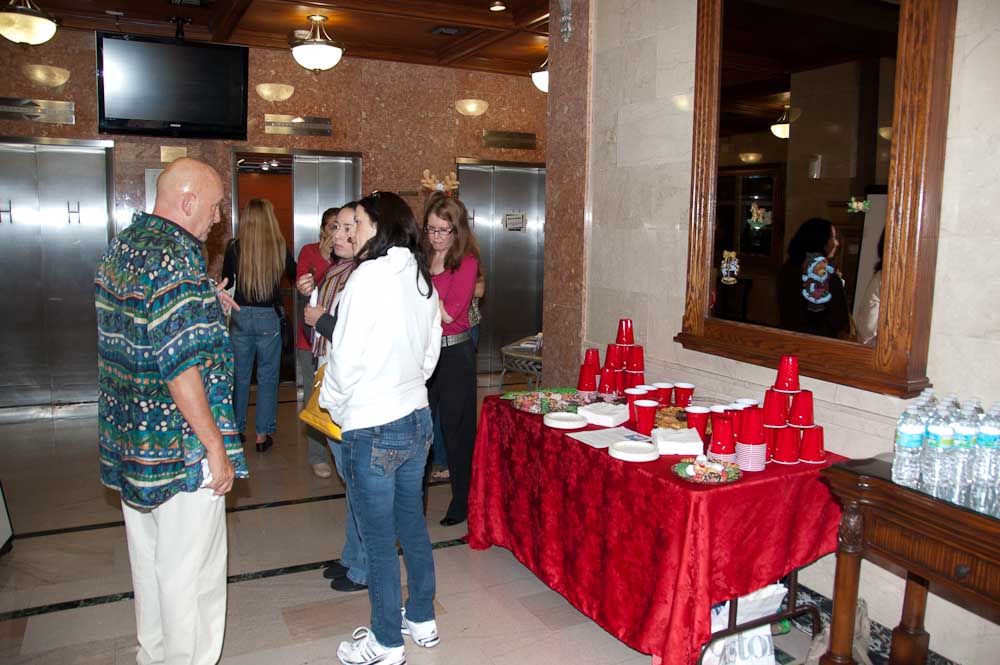
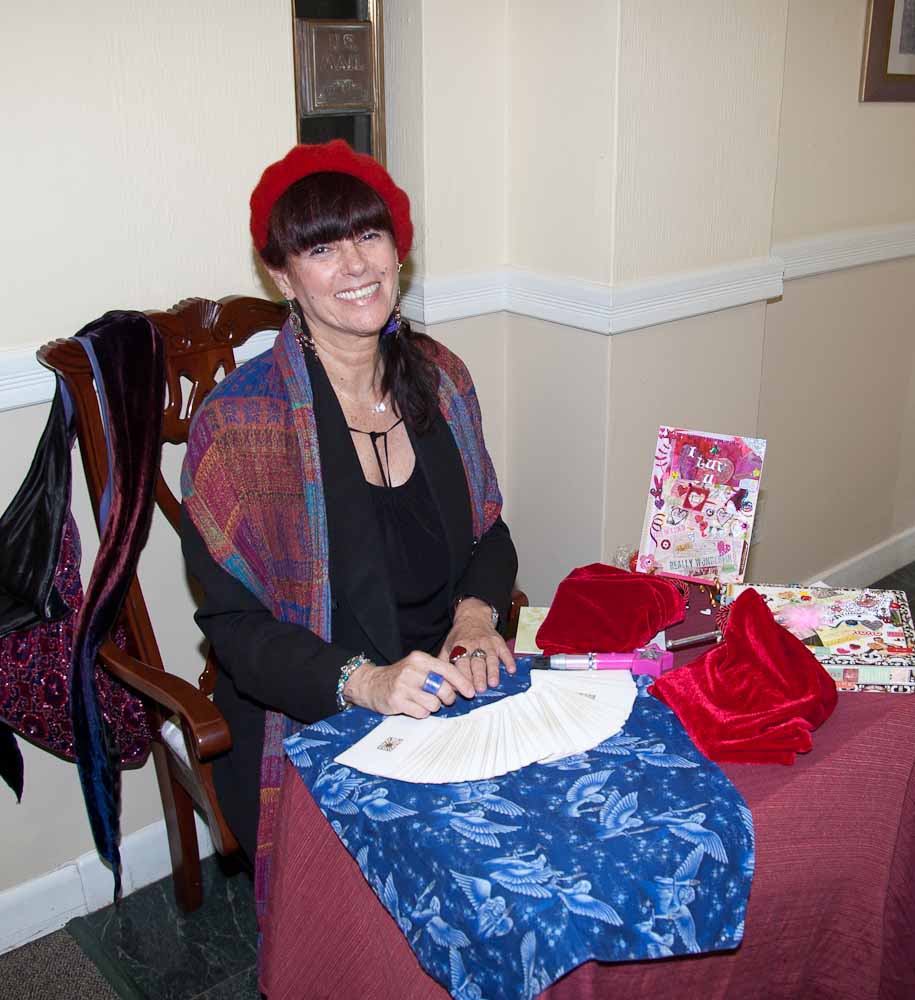
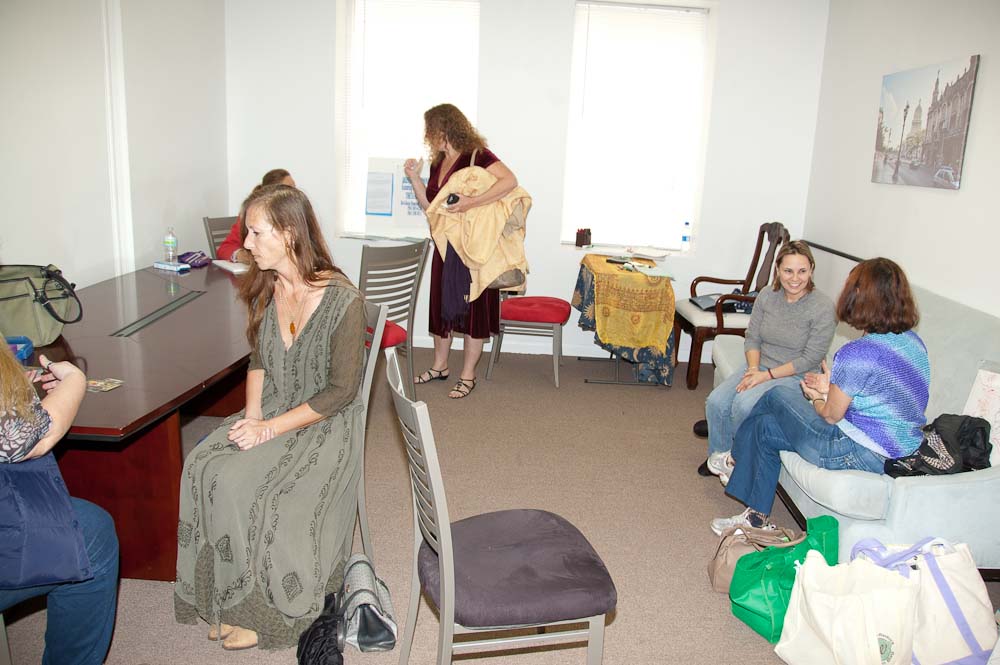

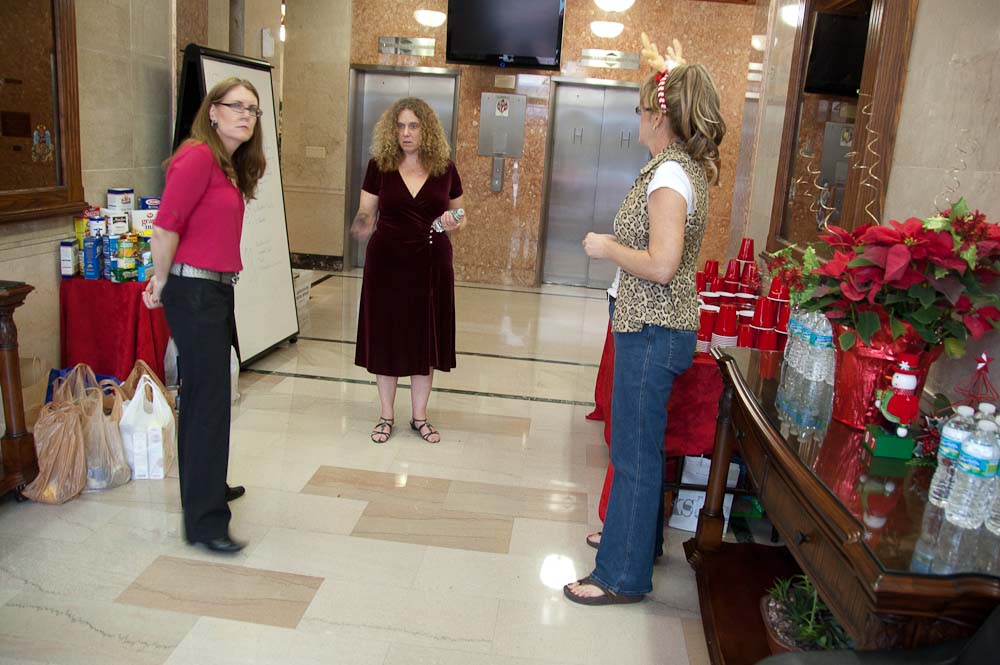
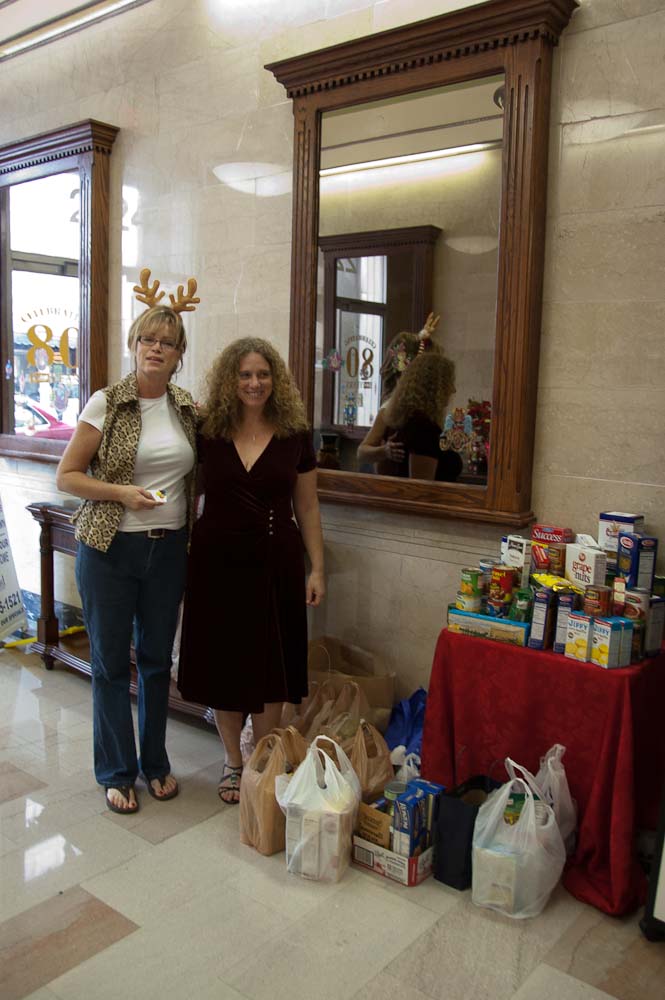
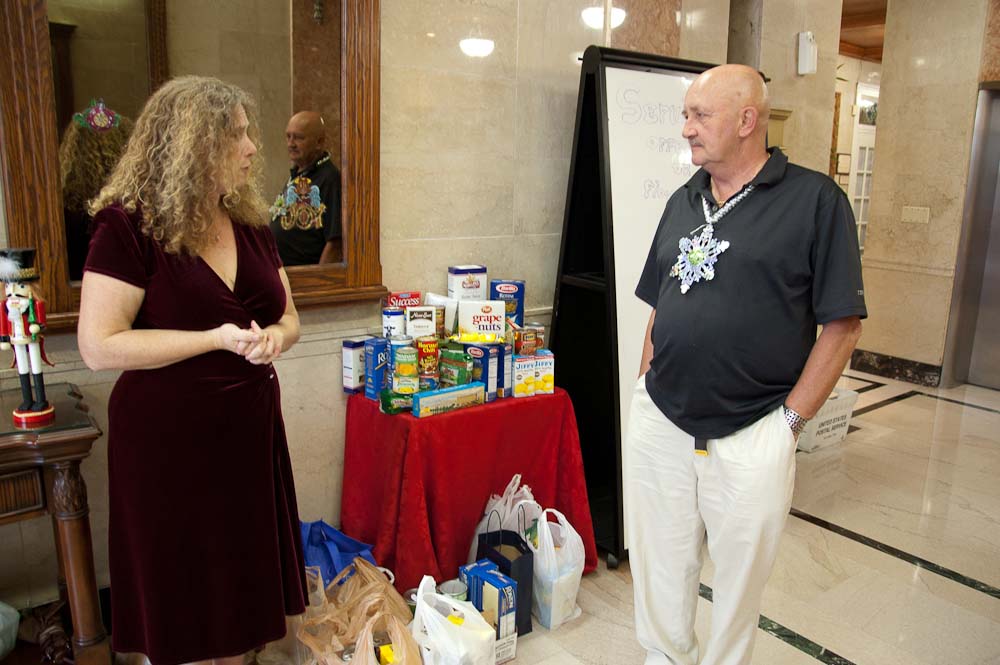
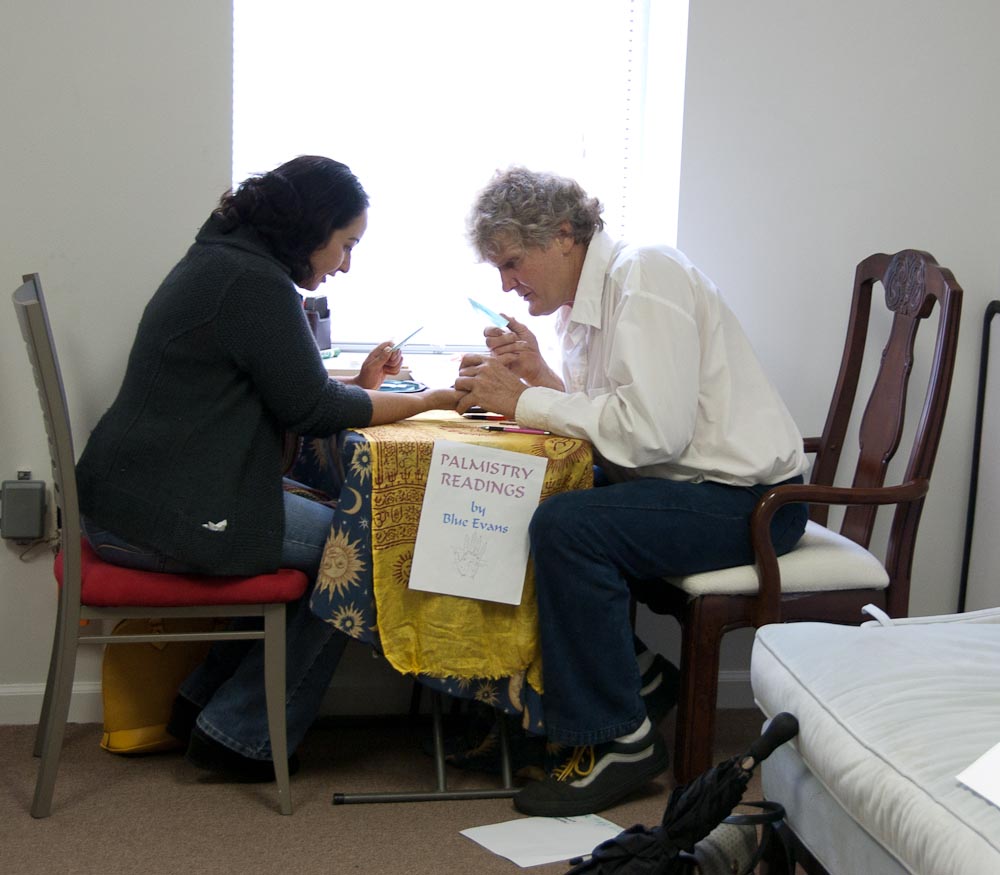
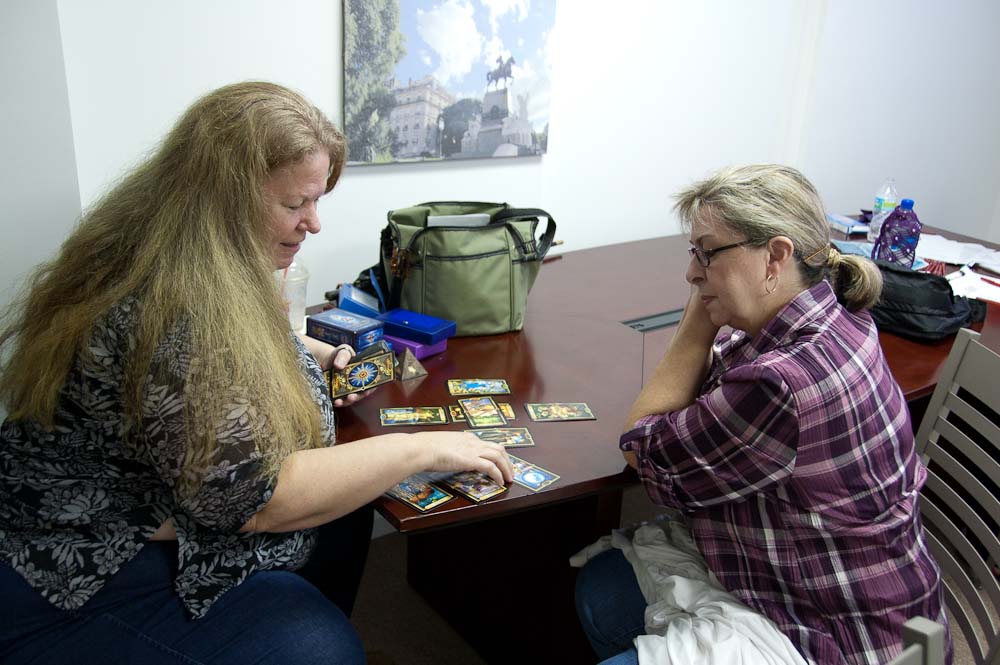
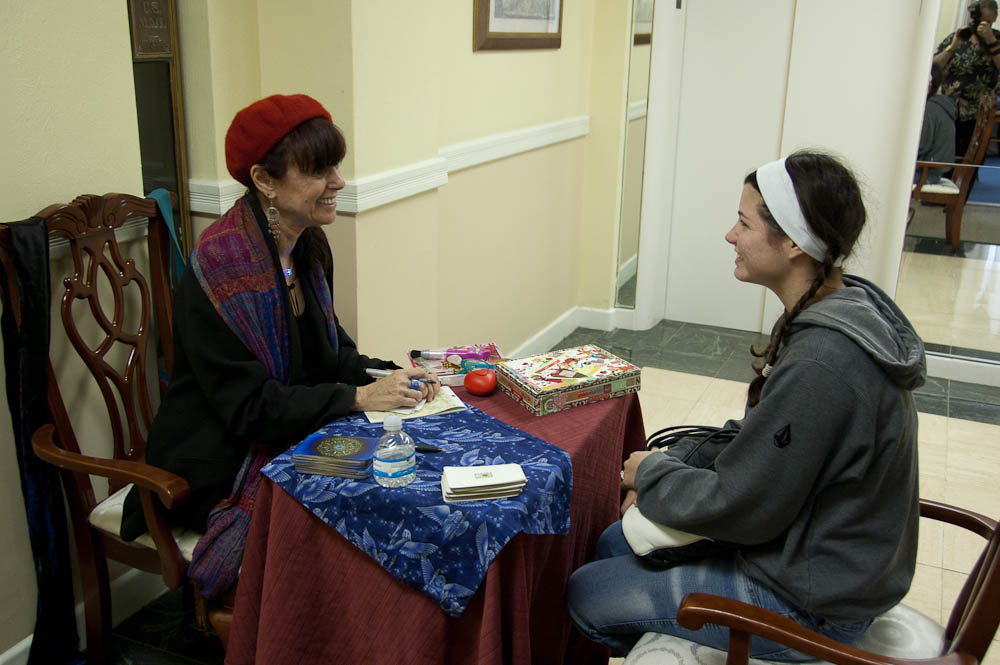
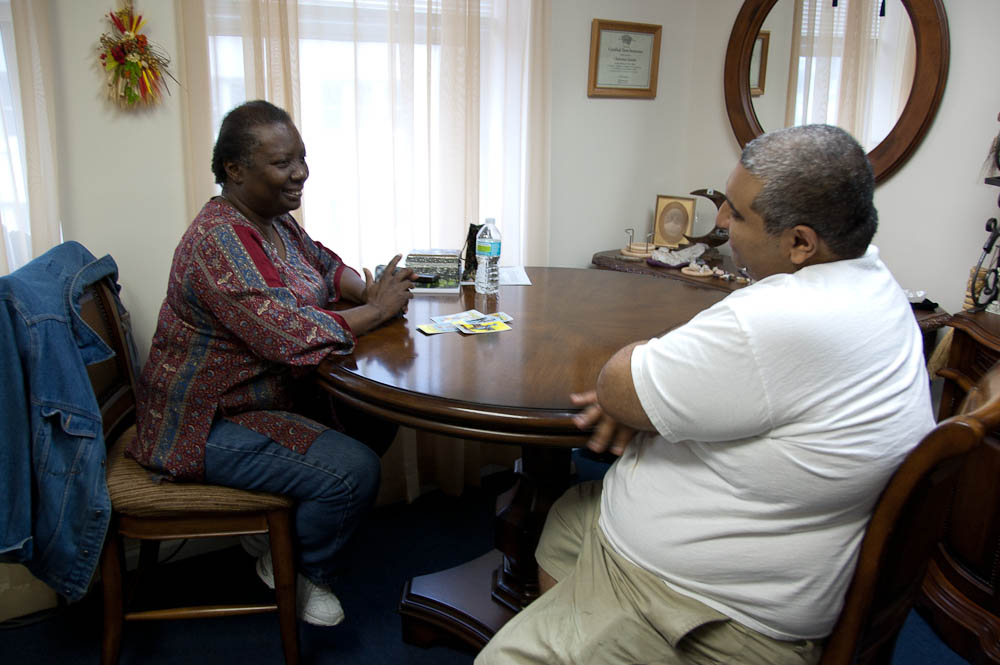
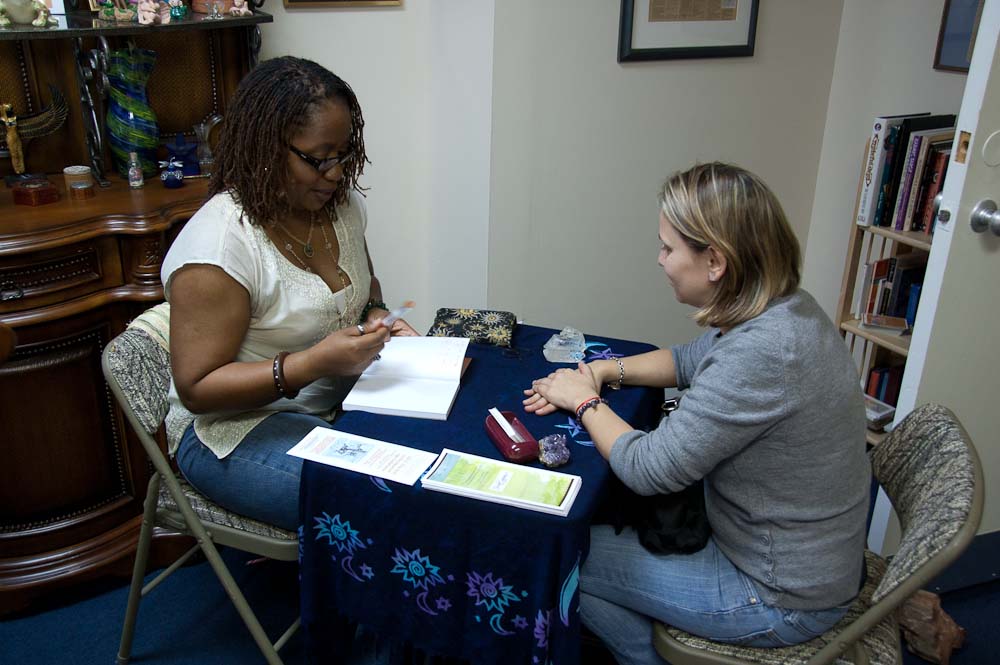
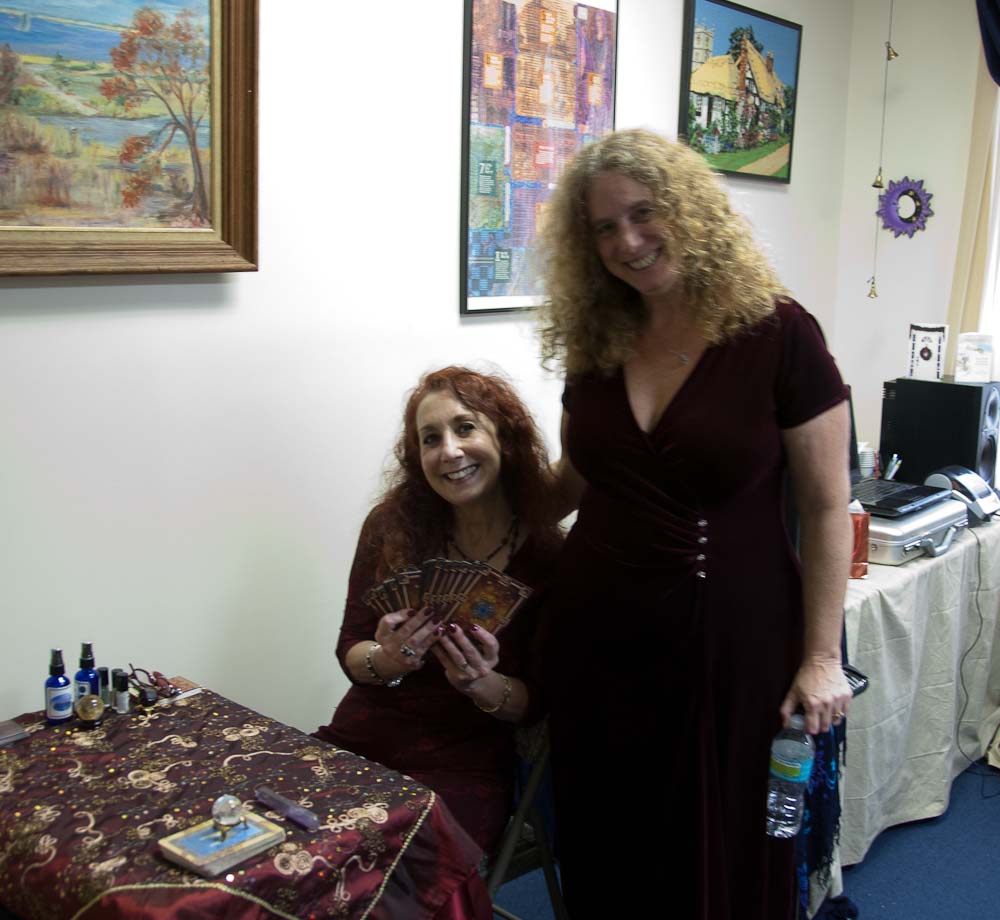


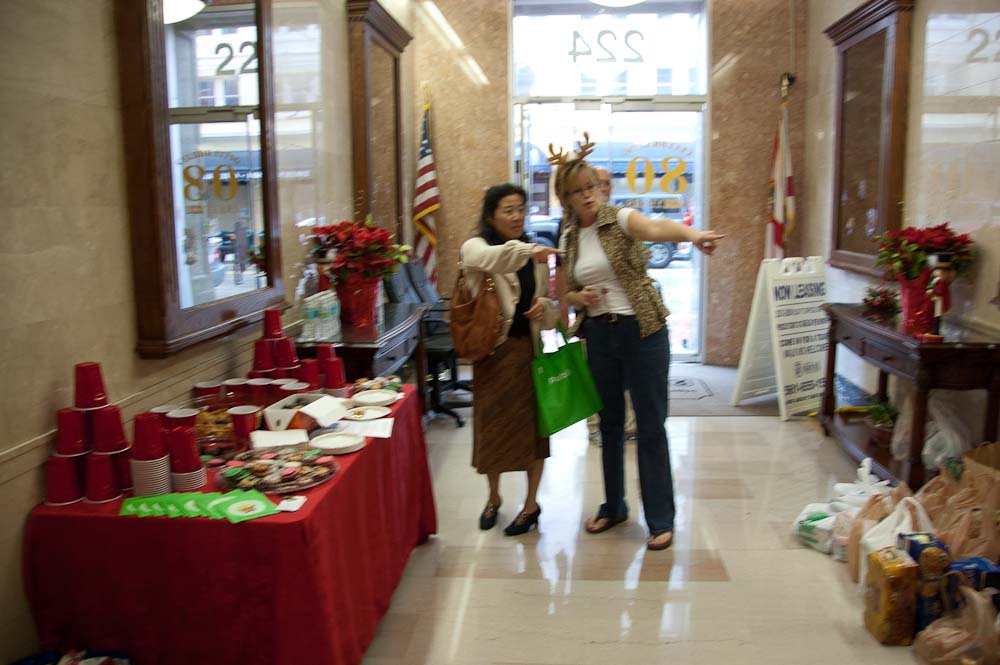
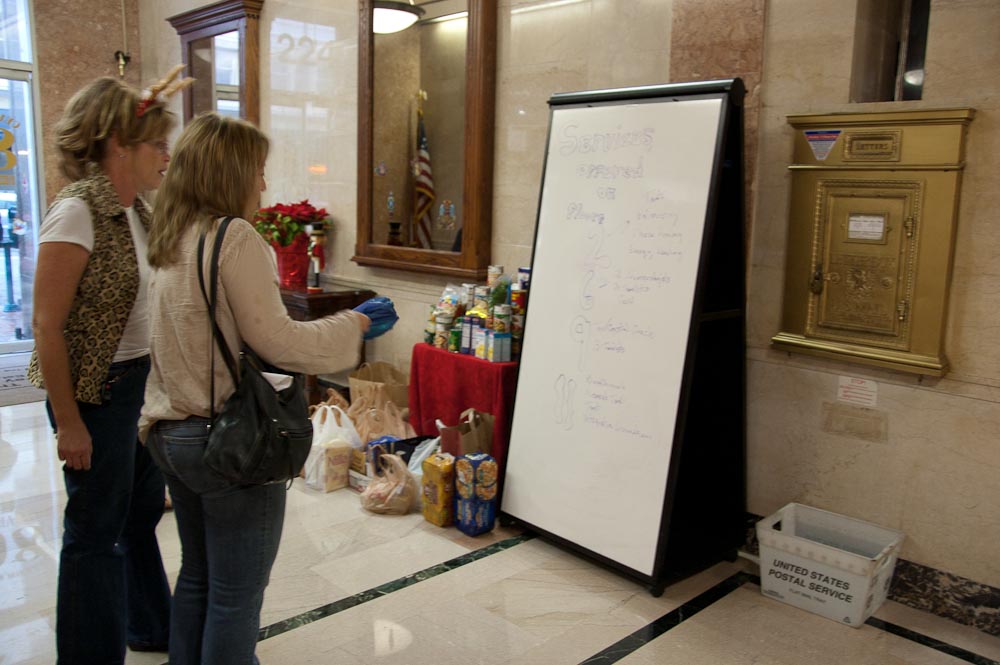
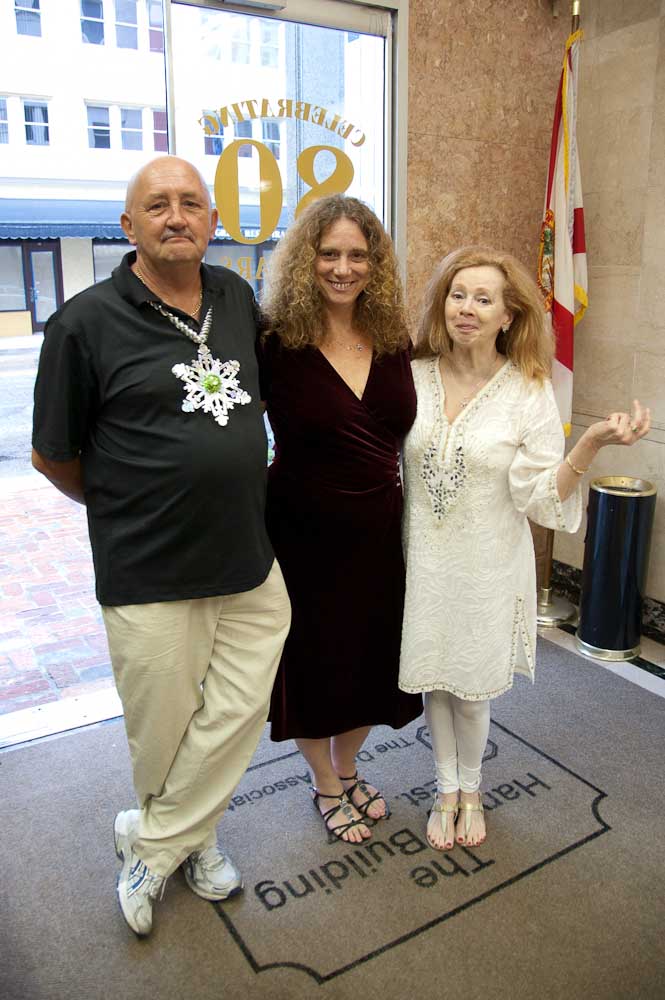
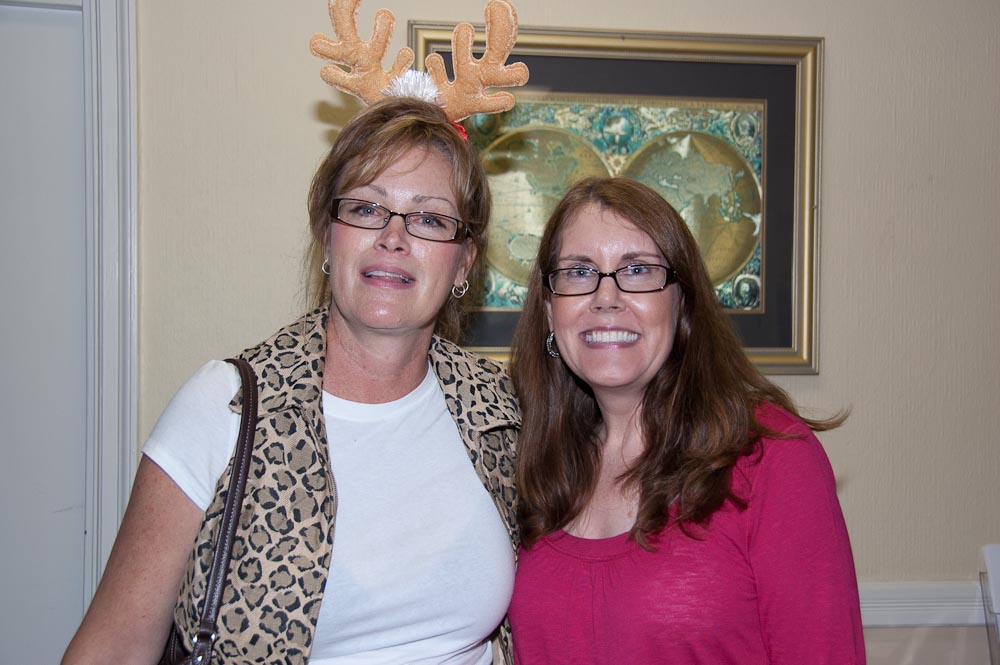
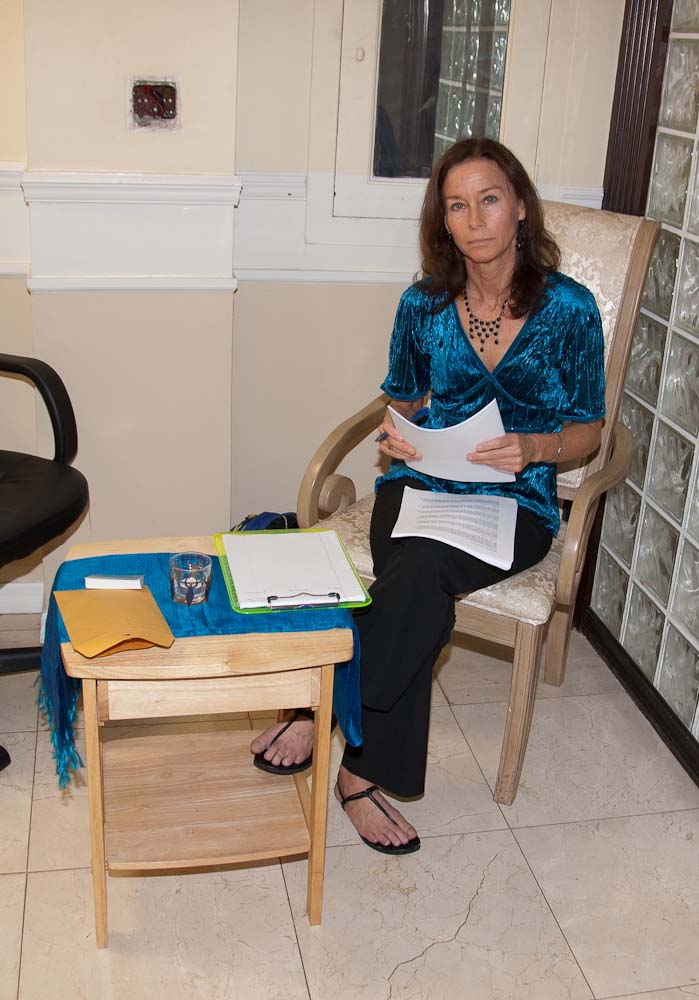
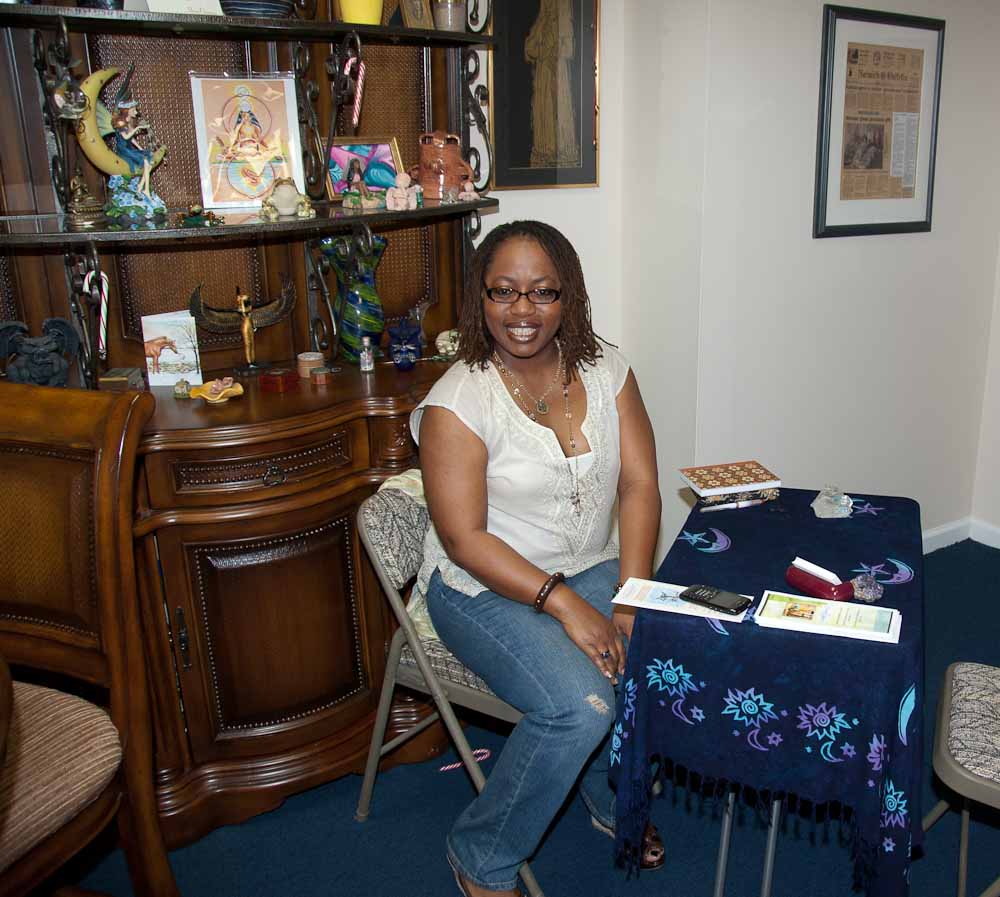
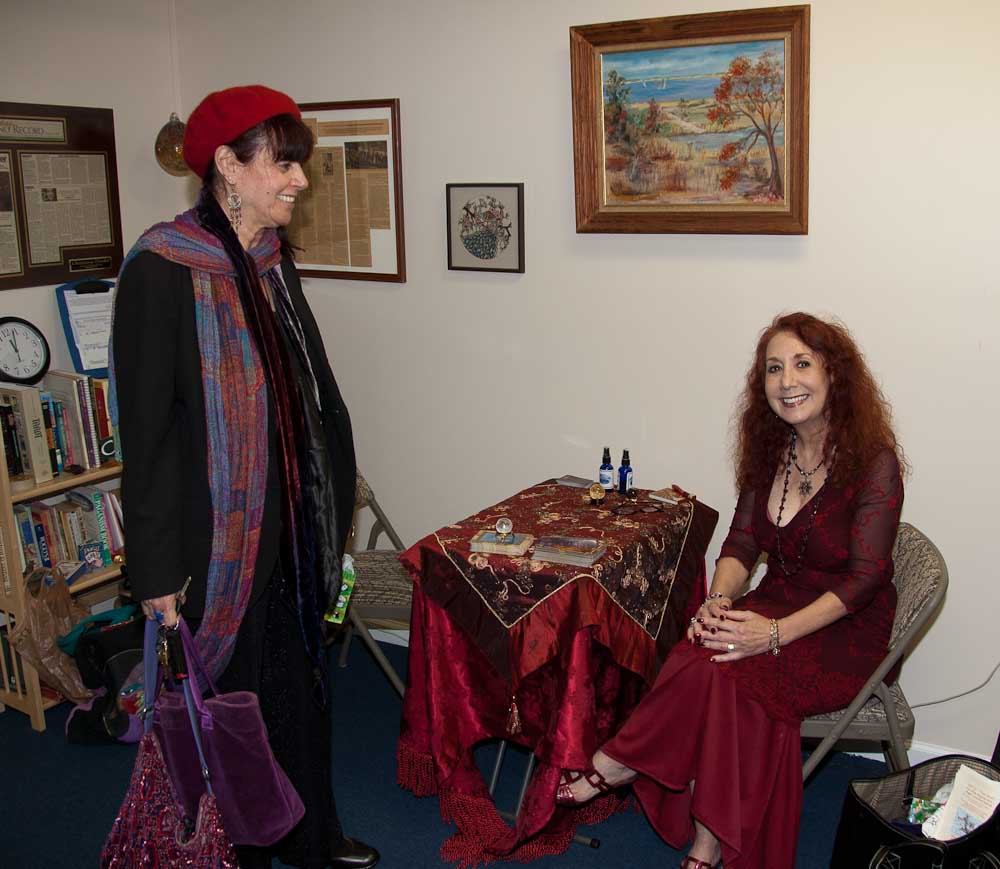
Fantastical Creatures Tarot Review
Christiana reviews the Fantastical Creatures Tarot by Lisa Hunt.
Fantastical Creatures Tarot
By Lisa Hunt and D.J. Conway
Published by U.S. Games
ISBN-13: 978-1-57281-541-4
Review by Christiana Gaudet
I can’t say that I am a true fan of fantasy art, but I am a true fan of fantasy artist Lisa Hunt. With the publication of Fantastical Creatures Tarot she distinguishes herself as having designed and published four complete Tarot decks. Three of her four decks, including the new Fantastical Creatures Tarot, are collaborations with Pagan author D.J. Conway. My very favorite Lisa Hunt deck is her only solo Tarot project, Animals Divine Tarot.
Fantastical Creatures Tarot is a deck of mythical beings with a magickal purpose. D.J. Conway has a wonderful theory of mythical beings, which she first presented to the Tarot community in the Celtic Dragon Tarot. She suggests that beings of myth and legend truly exist on a different plane than our own, and that we can tap in to their power, and use it in our own magickal work. I think that is something that most of us intuitively knew, or at least hoped, as children, but it took D.J. Conway to put it in to words.
I don’t always agree with D.J. Conway’s Tarot interpretations. Perhaps I am too rooted in my own Tarot understanding to accept the new traditions that are being spearheaded by the dynamic duo of Hunt and Conway.
As with Hunt’s other decks, the backs of the Fantastical Creature Tarot cards are reversible, and sport a version of what is now a Hunt trademark, a circle design with a Celtic feel. However, there are no interpretations for reversed cards included in the booklet.
Unlike Lisa Hunt’s other decks, Fantastical Creatures Tarot is published by U.S. Games, Inc. While I respect all the Tarot publishers, U.S. Games has a longstanding reputation, and it is nice to see Lisa Hunt appear in this catalog.
The deck is presented in U.S. Games’ new and attractive premium packaging. In the package is a very nice lay-out sheet, also designed by Lisa Hunt, which offers two specifically created spreads for use with Fantastical Creatures Tarot.
Another unique and welcome addition is that the two extra cards always included in every Tarot deck are printed, front and back, with a Quick Reference Guide to the Cards. This is a simply brilliant use of space that is usually wasted, although I find myself shaking my head quizzically at the key phrases listed for some of the cards. For instance, “Unpleasant Events” for Major Arcana 11, Justice, makes no sense to me. Likewise, Major Arcana 17, the Star, is “Success against Opposition.” Who or what, exactly, opposes the light of the Star? The LWB (Little White Book) offers no enlightenment here.
The LWB does, however, pack quite a punch in a small amount of space. My favorite part is that each card is given a mythical description of the image, a divinatory meaning, and magickal uses. There is no doubt that Fantastical Creatures Tarot is meant to be a potent magickal tool.
The cards themselves are a standard size at 2.75" by 4.57," and completed with a glossy finish. The cardstock is of good quality. The Major Arcana is traditionally ordered and named, except for the Hierophant, which is the High Priest, and the Devil, which is Chains. These changes were also made in Hunt and Conway’s Celtic Dragon Tarot, so I suppose we could call this a new Tarot tradition. The court cards are also traditionally named as Pages, Knights, Queens and Kings, and are particularly beautifully drawn. While in some Tarot decks the court cards are sort of boring and non-descript, the court of Fantastical Creatures is alive with sentiment and symbolism.
The suits are also traditional, being Wands, Swords, Cups and Pentacles. The elemental associations include Wands-Air and Sword-Fire, which does give me a bit of a problem. The solution I developed with Celtic Dragon Tarot is to find the commonality between Air and Fire, which includes attributes like inspiration and Yang energy.
Another thing I like about Fantastical Creatures Tarot is that the icon of each Minor Arcana card is shown at the top of the card, above the border of vines. This is a really nice touch, and will be very helpful to beginners.
The artwork of Fantastical Creatures Tarot is exactly what we have come to expect from Lisa Hunt, in other words, gorgeous! Each card is illustrated with a mythical being. These beings come from many world cultures, and it is nice to see them together in one package. There are dragons, gnomes, unicorns, mermaids and creatures from Greek mythology. There are lesser known (at least to me) creatures like my favorite, the Vegetable Lamb, who graces the Four of Swords. There are Gods and Goddesses from many cultures. One of my favorite deities in the deck is the lovely Yemaya, who is the Six of Cups. I was disappointed, however, that the booklet did not say why she was chosen to be the Six of Cups. Maybe too, I have a wee bit of an issue with my patroness Yemaya being lumped in with faery-tale creatures. I am sure, though, that this is meant to elevate the faery-tale creatures, rather than denigrate the deities.
Perhaps the most fascinating thing about Fantastical Creatures Tarot is that, when viewed with its three predecessors, it gives us a full view of Lisa Hunt’s vision of Tarot. By removing the beautiful Animals Divine from the mix, we can see as well the contribution that D.J. Conway has made to Tarot. Looking at these visions, and, dare I say it, new Tarot traditions, will give Tarot scholars a lot to talk about for years to come. Indeed, the body of Tarot as a whole is forever changed by Lisa Hunt and D.J. Conway.
All ruminations aside, Fantastical Creatures Tarot is an important addition to anyone’s Tarot collection, especially those who honor the Tarot as a tool of magick and meditation, as well as divination. It will be especially well loved by those who, as children, saw the faeries and the gnomes hiding in the garden.



